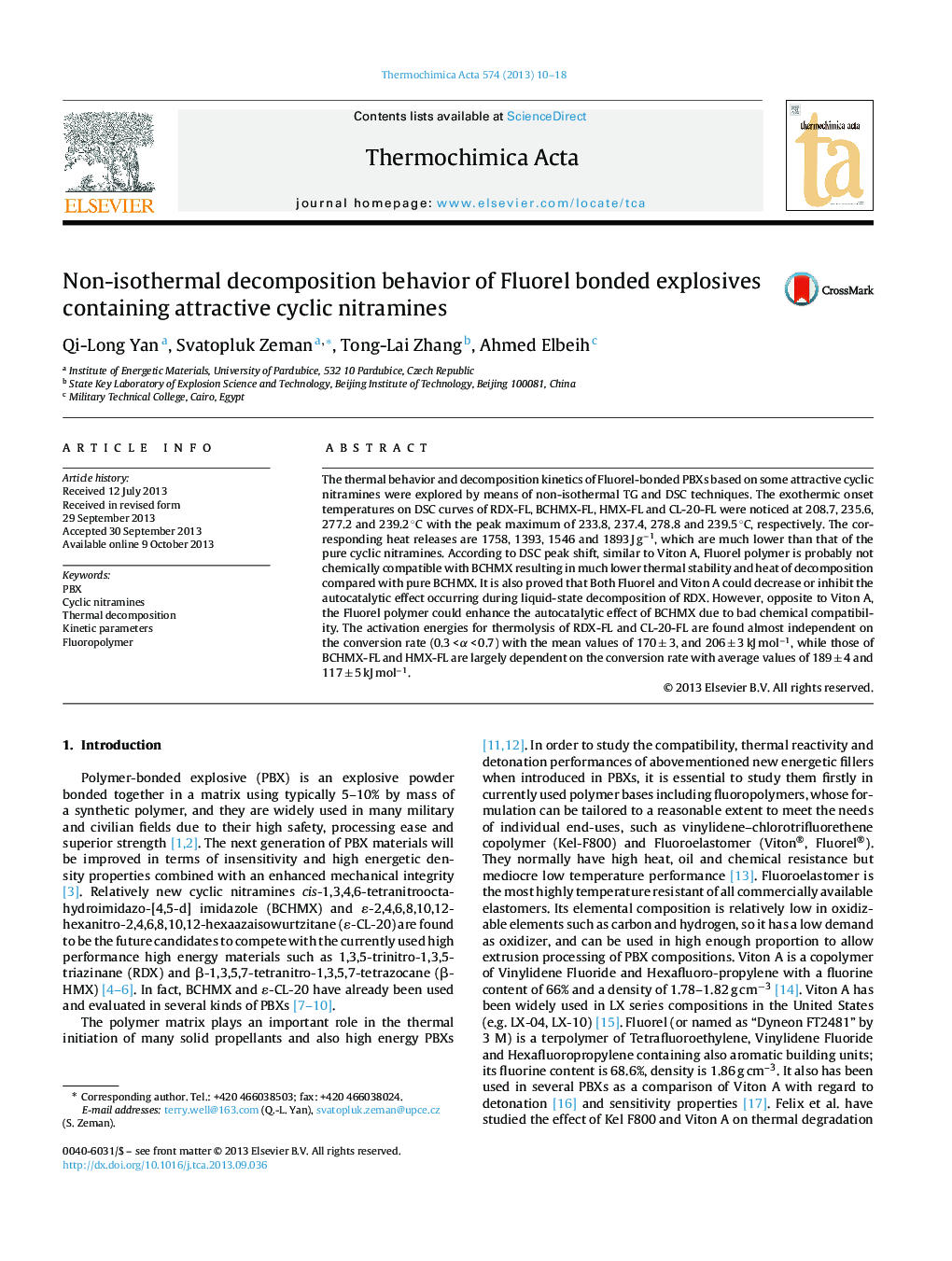| Article ID | Journal | Published Year | Pages | File Type |
|---|---|---|---|---|
| 673570 | Thermochimica Acta | 2013 | 9 Pages |
•The thermal behavior of Fluorel bonded explosives (PBXs) containing cyclic nitramines have been investigated.•Their decomposition kinetics parameters have been calculated by modified Kissinger–Akahira–Sunose (KAS) method.•It has been found that Fluorel matrix has a significant effect on the activation energy distribution of cyclic nitramines.•The Fluoropolymer is chemical incompatible cyclic nitramines with crowded molecule such as BCHMX.
The thermal behavior and decomposition kinetics of Fluorel-bonded PBXs based on some attractive cyclic nitramines were explored by means of non-isothermal TG and DSC techniques. The exothermic onset temperatures on DSC curves of RDX-FL, BCHMX-FL, HMX-FL and CL-20-FL were noticed at 208.7, 235.6, 277.2 and 239.2 °C with the peak maximum of 233.8, 237.4, 278.8 and 239.5 °C, respectively. The corresponding heat releases are 1758, 1393, 1546 and 1893 J g−1, which are much lower than that of the pure cyclic nitramines. According to DSC peak shift, similar to Viton A, Fluorel polymer is probably not chemically compatible with BCHMX resulting in much lower thermal stability and heat of decomposition compared with pure BCHMX. It is also proved that Both Fluorel and Viton A could decrease or inhibit the autocatalytic effect occurring during liquid-state decomposition of RDX. However, opposite to Viton A, the Fluorel polymer could enhance the autocatalytic effect of BCHMX due to bad chemical compatibility. The activation energies for thermolysis of RDX-FL and CL-20-FL are found almost independent on the conversion rate (0.3 < α < 0.7) with the mean values of 170 ± 3, and 206 ± 3 kJ mol−1, while those of BCHMX-FL and HMX-FL are largely dependent on the conversion rate with average values of 189 ± 4 and 117 ± 5 kJ mol−1.
